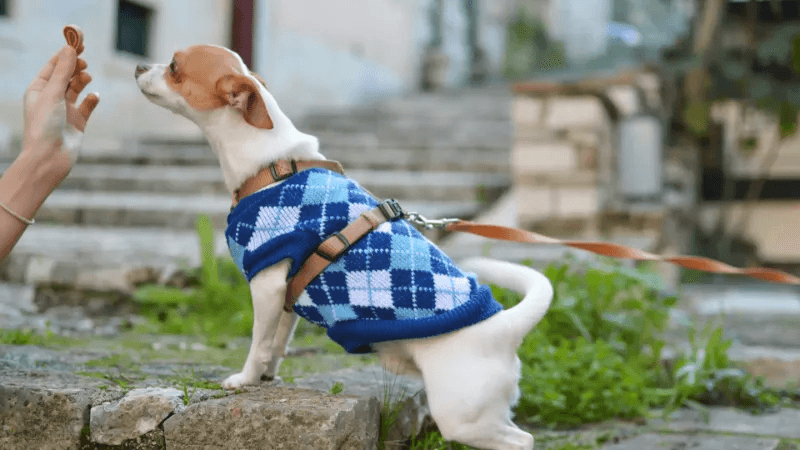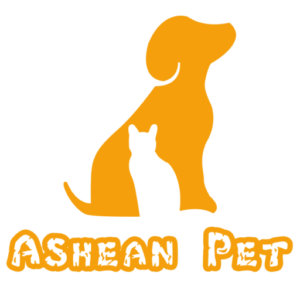
What Makes a Dog Toy Recyclable
Knowledge of recyclable dog toys can help pet owners, especially those who want to live an environmentally friendly lifestyle, by making good choices regarding the toys they purchase for their pets. If the items used in making the dog toys are reusable when broken down, this can help reduce waste products and resources. All those features that make a dog toy recyclable fix its materiality. Generally, these toys are made from natural rubber, recycled plastics, or any other material that can break down and be reused. You get to purchase safe and enjoyable toys for your pet and, at the same time, ensure the environment stays green by recycling. So the next time you decide to go shopping for your pup, you choose toys that can be recycled and make an apt choice for your pet and the environment!
Materials Used in Recyclable Dog Toys
● Eco-Friendly Plastics
Plastics used to make recyclable dog toys can be obtained through materials that are recycled or derived from renewable resources like polymers. These plastics are expected to be hard-wearing but non-toxic to dogs, so there is less chance of toxic leaching. Manufacturers seek to load production using environmentally friendly plastics, especially disposal effects on the environment commonly associated with plastics.
● Natural Rubber
Natural rubber is derived from rubber trees and is commonly used for dog toys because it is hard-wearing and elastic. It is also an excellent supplement to synthetic rubbers and plastic products because it is harmless to humans and the environment. Natural rubber is ecological and can be recycled because it is biodegradable, resilient, and can handle severe chewing and playing.
● Hemp and Cotton
Hemp and cotton are the two natural fibers that are equally environment-friendly and disintegrate quickly when decomposed. These materials are used where the dogs are most likely to come into contact with such inventions as soft toys for dogs, ropes, and tug toys. The material should be solid and resist mildew and mold, which is why hemp is preferred. Still, it should also be gentle on the dog’s teeth and gums, and this is why cotton is added to the mix; environmentally friendly materials are preferred when creating pet accessories.
● Recycled Materials
Various waste materials, such as fabrics, plastics, and other used-up materials, are used to make these dog toys. This approach is helpful by providing uses for items that would otherwise be disposed of as waste through the landfill method. Recycled dog toys can be smooth or rough in texture and may not be as long-lasting as other toys, but there are currently many varied kinds of toys made from used material for dog use.
● Biodegradable Materials
Biodegradable materials, such as cornstarch, potato starch, or bamboo, may be plant-based and decompose independently without having to be disposed of by humans due to their polluted nature. Toys made for dogs must be biodegradable, meaning that after they have been used for their intended purpose, they will have caused natural degradation on the planet.
The Manufacturing Process of Recyclable Dog Toys
1. Material Selection:
Sourcing Eco-friendly Materials: From the beginning, the manufacturer begins by identifying an appropriate and environmentally friendly material like natural rubber, recycled plastics, or organic fiber. They select products and materials that can withstand these conditions, be practically safer, and are environmentally friendly.
2. Design and Prototyping:
Creating a Sustainable Design: Designers work on the sketches and create models of the dog toys emphasizing utility,-material properties, and functionality for reuse and recyclability. At this stage, it is possible to experiment with the forms, textures, and parameters of toys necessary for the necessary pet till they are both cute and safe.
3. Material Preparation:
Processing Raw Materials: The materials selected go through cleaning and processing. For Recycled plastic, this entails breaking down the used plastic into small sizes and melting them into tiny beads known as pellets. For natural rubber, it could include tapping the rubber and processing the said rubber.
4. Molding and Shaping:
Forming the Toys: The processed materials are then subjected to heat and then poured into the required molds to produce the forming of the dog toys. This step assists in confirming that each toy developed fully complies with the designed specifications of toys and acceptable levels of safety. They are made in different shapes and sizes to accommodate different breeds and kinds of play the dogs engage in.
5. Cooling and Setting:
Solidifying the Shapes: Following molding, the toys are left to cool so they can harden to the set form. This final excellent step typically includes air-cooling or water-immersing, depending on the material type. Adzima explains that adequate cooling is vital to keep the toys firm and in their required form.

6. Finishing Touches:
Refining the Products: After the toys have been molded and have been allowed to cool down, they are trimmed in certain areas to remove the unwanted material, shaved to remove rough edges and other final touches may be given to the toys.
7. Quality Control:
Ensuring Safety and Durability: As mentioned, each toy is checked for quality, safety, and, of course, the signs of durability. This includes the process of testing for the strength of the product to ascertain that the compound used to produce the part is non-toxic and if the design for the product includes the ability to be recycled. The type of toys that flood the market is well regulated, with only the best toys sold to the public.
8. Packaging:
Eco-friendly Packaging: The manufactured toys are packed and shrink-wrapped in recyclable or biodegradable material, e.g., paper or plastic. This step ensures that the firm adheres to environmental conservation measures.
9. Distribution:
Getting Toys to Market: These packaged toys are then available to retail shops or end-users, as the case may be. Sometimes other optimum solutions for moving the product from one place to another are used to reduce the adverse effects even more.
10. Consumer Use and Recycling:
Encouraging Recycling: After the toys have been used for quite a long time or are no longer helpful for consumers, they should properly dispose of the toys. Producers sometimes include instructions or materials so that the user may adequately recycle the material to continue the loop of reuse and recycling.
Challenges in the Recyclable Dog Toys Industry
1. Material Durability: This article says that recyclable dog toys generally have a problem when it comes to the issue of sturdiness as compared to non-recyclable toys. The recycled product might contain areas that have less strength and durability. Thus, it will wear out fast. This can lead to more replacements needed, which may lead to a cancellation of the environmental benefit of using recyclable material.
2. Consumer Perception: Most pet owners might be questioning the efficiency of recyclable dog toys besides the safety of their pets. They may consider recyclable dog toys less effective or less fun for the dog than conventional toys. To change such a perception, opening the market for recyclable products and educating the target consumers on quality products such as recyclable dog toys is crucial.
3. Cost of Production: Manufacturing recyclable dog toys is more expensive than usual toys. From this perspective, it is clear that the various processes applied when recycling materials and standardizing their quality create additional expenses. These higher costs often result in higher consumer prices, which could reduce the demand for recyclable rubber toys.
4. Limited Material Options: The choice of materials for producing recyclable dog toys is limited, which may determine the range of toys that may be developed. Manufacturers must deal with materials that are safe for pets and appropriate for recycling at the same time. This constraint ensures that there is little or no customization and variety of recyclable dog toys, thus little chance of satisfying a wide client base.
5. Recycling Infrastructure: In fact, the recycling structure of pet products like dog toys is sometimes virtually negligible. Several areas lack adequate facilities to deal with such materials properly. This lack of facilities may pose a challenge as dog toys labeled as recyclable are recycled, hence little improvement in the environmental impact.

Innovations in the Recyclable Dog Toys Industry
1. Modular Designs: Some dog toys made from recyclable materials have the following designs: the toy's parts can be replaced when they are old. This approach to toy design helps prolong the toy’s life, and in case of any damage, the part that requires recycling is the affected part of the toy, not the whole toy. Modular, recyclable pieces and dog toys have decreased waste and better recyclability standards.
2. Enhanced Durability Technologies: Studies of re-creatable materials have produced better and longer-lasting dog toys. Some improvements include using materials with reinforced fibers or improved polymers that make the toys last long without compromising on the recycling factor. These technologies eliminate fears that recyclable dog toys may not last long due to the toy's dexterity.
3. Integrated Recycling Programs: Certain firms are developing take-back schemes for reusable dog toys, particularly those made of recyclable material. These plans enable consumers to dispose of used toys appropriately and guarantee the correct disposal of the materials. Combined processes improve the latter stages of recyclable dog toys as they provide a full cycle of the product’s utilization.
4. Non-Toxic, Safe Materials: New fascinating and protective techniques targeting the concept of non-toxic and pet-safe dog toys that are also recyclable deal with the aspect of utilizing non-hazardous substances for animals. This includes using harmless natural dyes and additives that would not pose any threat to the toy. New developments in non-hazardous materials DO enhance the aesthetic value as well as the functionality of recyclable dog toys and hence are preferred for use by pet owners.
Tips for Choosing Recyclable Dog Toys
1. Material Composition: Choose toys free from chemicals that are unsafe for pets or the environment, such as those made from natural rubber, hemp, or recycled fabrics. These are pet-friendly and eco-friendly, helping to avoid the accumulation of waste disposed of in landfills.
2. Durability and Longevity: It should also include hard and well-made toys to complement the dog’s chewing behaviors. Not only does buying long-lasting toys save money for the need to buy a new toy often, but it also reduces the amount of waste produced.
3. Manufacturer’s Recycling Program: Search for brands that have recycling programs or accept toys to be recycled. Schools implement take-back programs for used toys and then crash them to produce new ones.
4. Packaging: Some chosen toys should have little or no packaging; when they must be packaged, they should be made from biodegradable or reusable material. Packaging is another problem that harms the environment. Thus, it is recommended to consider brands that use minimal packaging.
5. Multi-Purpose Functionality: Always choose toys that have more than one utility, such as toys that can also be used to teach dental hygiene or solitaire. Multi-functional toys help save the use of many other items that would otherwise be used to accommodate the pet’s needs, which is more eco-friendly.
Conclusion
Recyclable dog toys mean more than just being a dog plaything; they are a small step towards making the world healthier. Most of these toys are made from natural resources such as natural rubber, hemp, or recycled plastics, so every game of fetch or tug-of-war has a lesser footprint than the paw. If you select toys made from such a list of materials, you are giving your puppy or dog long-lasting toys that do not harm the environment.
Manufacturing recyclable dog toys requires new ways of producing products that result from recycling waste items into toys that are secure and exciting for the dogs. Reusability and recyclability or biodegradability of the materials being used are giving way to the hands of manufacturers as more and more organizations embrace sustainability. This therefore implies that toys your dog loves to play with do not have to be dumped in a dump site but instead can be recycled or Biodegraded hence giving room for a way for more environmentally friendly products in the future.
The next time you shop for your puppy, think about where the products you are buying are coming from and their effects on the environment. Providing your dogs with pet toys made from materials that can be reused is one activity that those who want to keep the environment green can endeavor to undertake. Your pet will surely enjoy the new toys, and at the same time, you will be happy knowing you had an opportunity to help. Thinking of becoming a shoppers’ paradise? To discover the collection of pet toys that can be recycled, start today and contribute to sustainability for our dogs in the future.

FAQs
1. What are the environmental benefits of using recyclable materials in dog toys?
The use of recycled material in dog toys reduces the amount of waste, the need to obtain raw materials, and, ultimately, the carbon emissions produced in the manufacturing process. It also fosters improvement in the cyclic use of materials and, hence, promotes the concept of sustainability in the environment.
2. Can compostable materials be used in dog toys?
In the case of dog toys, compostable material can be used where toys are expected to have a comparatively shorter product lifespan. Such materials deteriorate within composting conditions, recycling waste back to the soil.
3. Are there any innovative materials being used in recyclable dog toys?
Some innovative materials used in recyclable dog toys include recycled ocean plastics, bamboo fibers, and upcycled rubber. These materials help address environmental issues like ocean pollution and waste management.
4. How do recyclable dog toys support the circular economy?
Recyclable dog toys support the circular economy by reducing waste, reusing materials, and recycling end-of-life products. This approach minimizes resource extraction and waste generation, promoting a sustainable cycle of production and consumption.
5. Are there any drawbacks to using recyclable materials in dog toys?
The primary drawback is that recyclable materials may sometimes be more expensive than conventional ones, leading to higher retail prices for the toys. Additionally, some recyclable materials may not match the durability of certain synthetic materials, though advancements are continually improving this aspect.
